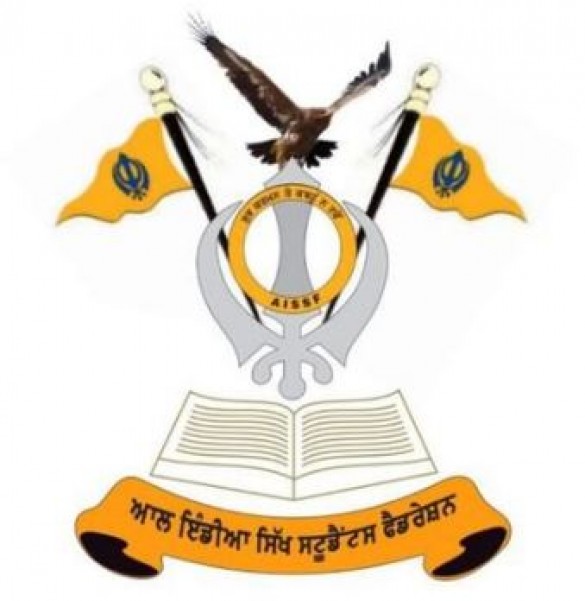
DAL KHALSA is the term used to describe the militia which came into being during the turbulent period of the second half of the eighteenth century and which became a formidable fighting force of the Sikhs in the northwestern part of India.
When Anandpur was evacuated in December 1705, the first Khalsa army that Guru Gobind Singh (1666–1708), the organization's founder, had organized and led had disintegrated. After its captain was captured and put to death, Banda Singh Bahadur's (1670–1716) other troop, which had once numbered 40,000 men, was dispersed. A similar force could not be immediately formed again due to the severe persecution that the Sikhs experienced, yet lone Sikh warriors persisted in defying the might of the State. These highly mobile guerilla bands or jathas, armed with whatever weapons they could get their hands on and subsisting off the land, continued to operate at the worst of times. However, the jathas frequently banded together when the circumstance called for it. The Bari Doab (the region between the Rivers Beas and Ravi) warrior bands were organized into four humans or squadrons of 200 each, with a designated area of action and provisions for mutual help in times of need, according to Ratan Singh Bhangu, Prachin Panth Prakash.
Also Read: Rani Sada Kaur: A Sikh Leader
Additionally, it was common for the majority of jathas to gather in Amritsar to celebrate Divali and Baisakhi. An old Sikh named Divan Darbara Singh (d. 1734) officiated as the congregation's general leader on such occasions.
After using force to put down the Sikhs in 1733, Zakariya Khan, the Mughal ruler of Lahore, decided to negotiate with them and promised them a jagir, or fief, the title of Nawab for their leader, as well as unrestricted access to and residency at Amritsar. Senior and devoted warrior Kapur Singh was elected as the Sikh leader and given the title of Nawab.
Most of the Sikh warriors gathered around their leaders, who were based in Amritsar. Nawab Kapur Singh separated the entire soldier force into two camps, Taruna Dal (the younger group) and Buddha Dal (the older group), for administrative convenience. Five jathas, each with its flag and drum, were created from Taruna Dal. The agreement with the government fell through in 1735, and the Khalsa was once more forced to divide into smaller groups and seek refuge in hills and forests due to increasing persecution. The Mughal empire was dealt a devastating blow by Nadir Shah's invasion in 1739, which allowed the Sikhs an opportunity to unite.
Also Read: Jassa Singh Ahluwalia: Spiritual Leader
After Zakariya Khan passed away on July 1st, 1745, they gathered on Divali and reorganized into 25 groups, each with roughly 100 people. Jathas continued to grow, and by March 1748 up to 65 distinct organizations were coexisting peacefully but still recognizing Nawab Kapur Singh's dominance.
By this point, a fresh contender for leadership had entered the picture. On January 12, 1748, Ahmad Shah Durrani began his first invasion of India and took control of Lahore. Nawab Kapur Singh emphasized the need for unity in the Sikh jathas as they assembled at Amritsar on Baisakhi Day, March 29, 1748. Under the supreme authority of Sardar Jassa Singh Ahluwalia, the whole Khalsa combat force was consolidated into a single entity known as the Dal Khalsa through gummata, or resolve.
Also Read: Chardi Kala: An Ascending Energy
The 65 bands were combined into 11 groups called misls, each of which was led by a well-known figure and had its name and flag. A loose confederacy in nature, the Dal Khalsa lacked a rigid constitution. All Amritdhari Sikhs were seen as belonging to the Dal Khalsa, a predominantly cavalry organization. Anyone who could ride well and was skilled with a weapon might join any one of the eleven misls, and they could switch allegiance at will. The Sarbatt Khalsa, the Panth's bi-annual assembly held in Amritsar, had control over the misls.
Akal Takht was the symbol of the unity of the Dal Khalsa which was in a way the Sikh State in the making. The Dal, with its total estimated strength of 70,000, essentially consisted of cavalry; artillery and infantry elements were almost unknown to it.
the leaders of the Dal Khalsa established a just and humane rule in the Punjab. After the initial period of predatory raids aimed at undermining the authority of the Mughal government, they established, like the Chauth of the Marathas, a system of rakhi, lit. protection, to protect the life and property of the people.
Also Read: Akali Baba Binod Singh Nihang : Changed Course of Sikh History
Bibi Deep Kaur Ji: Fearless Fighter